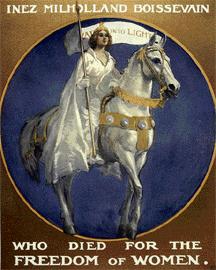 |
| Eugen Boissevain and his four brothers and their mother, Emily Heloise MacDonnell Boissevain. Eugen went into business with two of his brothers, Robert and Jan. |
he is best known for his two marriages, 1913-16 and 1923-49. In the seven-year period 1916-23 he was on his own, and it is interesting to know more about how he fared on his own.
Five men loom large in this period:
- His brothers Robert and Jan Boissevain worked with him to build up Boissevain & Co. into a major business, buying coffee in Java and shipping it to New York City. A steamship was named after them. They had a fleet at their disposal and a top-floor office in the Whitehall Building in lower Manhattan.
- Max Eastman, editor of The Masses, was engaged in anti-war activities until the U.S. Post Office essentially shut down his magazine. Eastman stayed in Eugen's house on St. Luke's Place in Manhattan, presumably a tenant. Eastman later writes glowingly about his friendship with Eugen in his book Great Companions. The circle around Eastman that included Inez Milholland and Eugen also included Sherwood Anderson, Eugene O'Neill (whose daughter Oona married Charlie Chaplin), Upton Sinclair (who had a crush on Inez), Amy Lowell, Mabel Dodge, Floyd Dell, Carl Sandburg, Crystal Eastman and Boardman Robinson.
- John (Jack) Reed (Harvard '10) was part of the group clustered around The Masses. In 1915 he met the leftist journalist Louise Bryant. He said: "She is coming to New York to get a job with me, I hope. I think she's the first person I ever loved without reservation." They were married that year. They spent that summer in Provincetown, at the tip of Cape Cod, with a group of other writers from Greenwich Village that included Floyd Dell and Theodore Dreiser. Several of them established the Provincetown Theatre Group at the end of a wharf. Bryant wrote: "Never were so many people in America who wrote or painted or acted ever thrown together in one place." Other writers like Eugene O'Neill and Edna St. Vincent Millay joined the group in later years. Reed sought money to go to Russia in 1917 to cover the Russian Revolution. Eugen spoke with some of his New York City friends and, according to Eastman, was the person who arranged Reed's funding. Reed wrote back with enthusiastic reports: "I have seen the future." He died in Moscow of an illness in 1920 and is one of only two Americans buried in the Kremlin wall, the other being Bill Haywood, who was Chairman of the American Communist Party and died in 1928 in Moscow.
- Charlie Chaplin was also a resident of Eugen's house. Born in 1889 four days before Adolf Hitler (his first film with dialog would be The Great Dictator, in which he made fun of Hitler). Chaplin would have been 27 years old when Eugen became a widower in 1916. He was already becoming very well known. In 1917, Chaplin signed with Mutual for $10,000 a week, plus a $150,000 bonus under a contract that required him to make 12 films annually with creative control. In 1918, he signed with First National for $1 million for eight films. Chaplin founded United Artists Corporation in 1919 with Mary Pickford, Douglas Fairbanks and director D.W. Griffith. Chaplin after World War II was accused of Communist sympathies and left the United States. He returned in 1972 for a special Academy Award for “the incalculable effect he has had on making motion pictures the art for and of this century.” The Queen in 1975 knighted him Sir Charles Spencer Chaplin. He lived two more years.
I am still poking around among source materials for this period of Eugen's life – including some unique letters that have been entrusted to me to put into context – and would welcome contact with anyone else who is doing research in this area. I will be in New York City and Washington, DC working on this during the April-June 2016 period.
